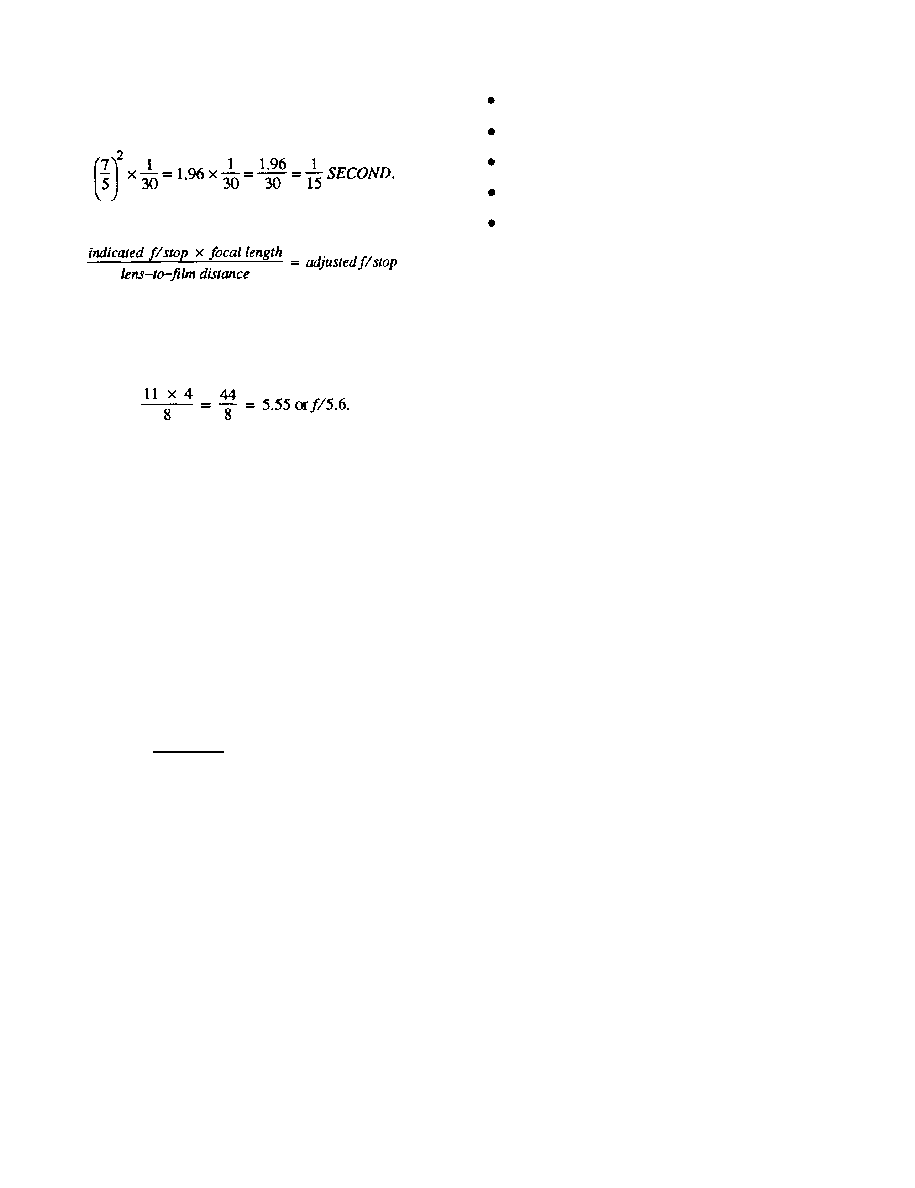
DOFMaster
for Windows
On-line
Depth of Field
Calculator
DOFMaster for Mobile Devices
On-line
Depth of Field
Table
Hyperfocal
Distance Chart
Articles
FAQ
Recommended
Books
Support
Contact
Links
Home
for Windows
On-line
Depth of Field
Calculator
DOFMaster for Mobile Devices
On-line
Depth of Field
Table
Hyperfocal
Distance Chart
Articles
FAQ
Recommended
Books
Support
Contact
Links
Home
As an Amazon Associate I earn from qualifying purchases.
![]()
camera that has a 5-inch lens and the bellows are
exposure of 1/30 second at f/4. The new exposure time
is determined as follows:
beyond one focal length. The original camera settings
problem is solved as follows:
models; however, there may be times when your light
meter does not operate properly, or you do not have time
to use it in order to "grab" an awesome shot. The f/16
rule of exposure allows you to determine basic camera
exposure settings for both black-and-white and color
photography without the aid of electronic devices.
example, when you use IS0 125 film, set the shutter
IS0 64 film, set the shutter speed at 1/60 second and the
lens aperture at f/16, and so on. When the camera does
not have a shutter speed corresponding to the IS0 of the
film, use the shutter speed that is closest to the IS0 of
the film.
sun goes behind a cloud, however, then the lighting on
the subject is decreased and you must change the basic
intensities are as follows:
or stop down the aperture for the lighting conditions.
determine the required exposure to be 1/500 second at
f/5.6 but you wish to use a small aperture for greater
depth of field, you can change the setting to 1/60 second
There are three good reasons for knowing and
understanding the basic principles of exposure. First,
you want to control the depth of field and stop action
instead of the camera controlling it. Second, a light
meter cannot think All a light meter does is respond to
the light it receives. You must know when to override
the camera; for example, when the subject is side-
lighted or back-lighted. Third, meters are mechanical
wrong, or fail altogether. When you can workout in your
will know when the camera or light meter is wrong.
should also understand that the incorrect use of a light
meter can result in consistently unacceptable results. To
assure consistently acceptable exposures, you must
become thoroughly proficient with the correct operation
of a light meter.
Basic Photography Course

As an Amazon Associate I earn from qualifying purchases.
WWW.DOFMASTER.COM
© 2006 Don Fleming. All rights reserved.
© 2006 Don Fleming. All rights reserved.